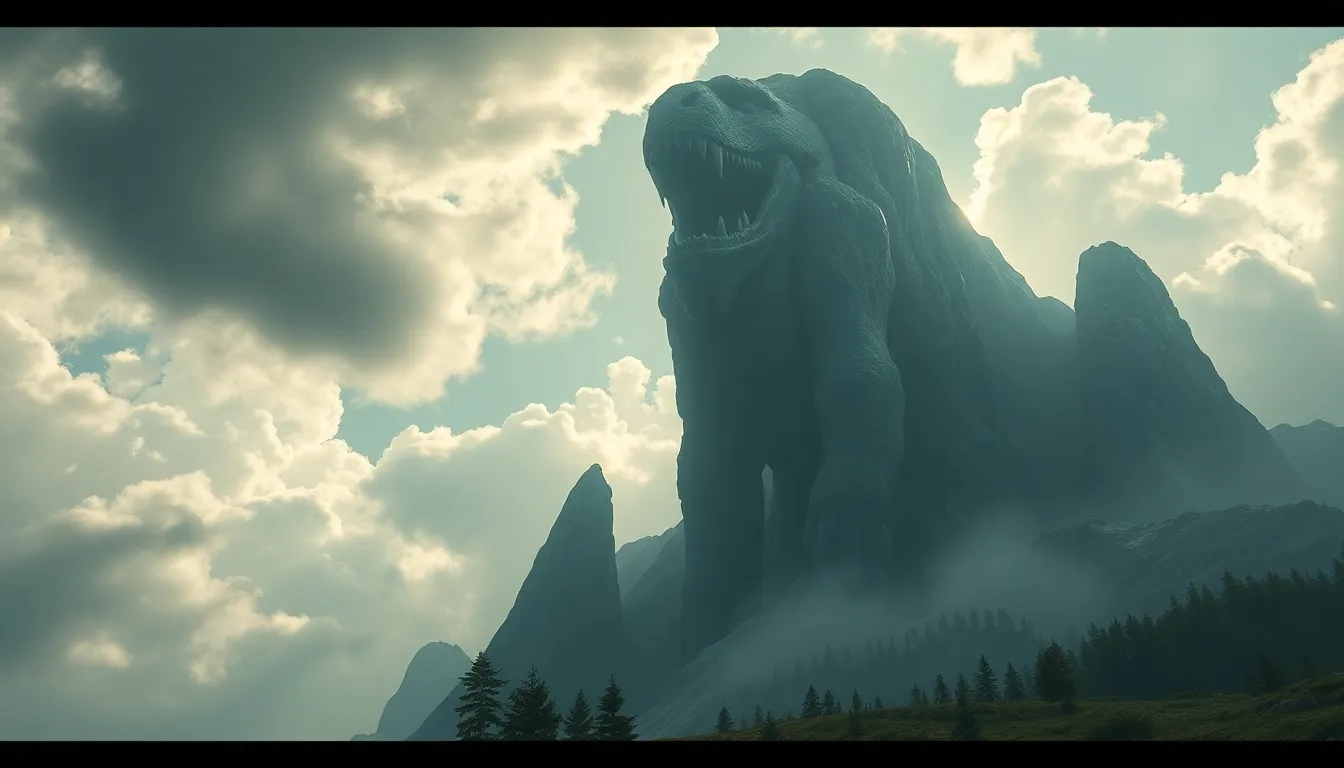The Mountain of Giants: Exploring the Folklore of Colossal Creatures
Introduction to Colossal Creatures in Folklore
Throughout history, colossal creatures known as giants have captivated the imagination of cultures around the world. These beings, often depicted as larger-than-life figures, serve various roles in folklore and mythology, symbolizing both the awe of nature and the complexities of human experience. From ancient tales to modern interpretations, giants provide insight into the values, fears, and aspirations of the societies that tell their stories.
Historical Context of Giant Folklore
The concept of giants can be traced back to ancient civilizations. In Mesopotamian mythology, beings like the Anunnaki were revered as powerful deities who influenced the natural world. Greek mythology introduced figures such as the Titans—immense beings that battled the Olympian gods, representing chaos and primal forces.
As cultures evolved, so did the tales of giants. The medieval period saw giants featured in Arthurian legends and Norse mythology, while the Renaissance brought a renewed interest in classical myths, further embedding giants into the cultural consciousness.
Regional Variations in Giant Legends
Giants appear in diverse forms across various cultures, each reflecting unique societal values:
- European Folklore: The biblical figure Goliath is perhaps one of the most famous giants, symbolizing the struggle between the powerful and the weak. Additionally, Norse mythology features frost giants, representing the harshness of nature.
- Native American Tales: Many tribes have their own giant legends. For example, the Ogopogo is a lake monster in the Okanagan Valley, often described as a giant water serpent.
- Asian Giants: In Japan, the Oni are depicted as ogre-like giants that embody chaos and mischief. Chinese mythology features Shen, celestial beings often associated with nature and the cosmos.
Symbolism and Meaning Behind Giants
Giants often serve as symbols of nature’s forces or deities. They can represent:
- Nature’s Power: Giants are frequently tied to natural elements, embodying mountains, storms, and other awe-inspiring phenomena.
- Human Emotions: Psychologically, giants may symbolize our fears, aspirations, and struggles. They can be seen as reflections of human strength, vulnerability, and moral dilemmas.
Famous Giants in Mythology and Literature
Several giants have become cultural icons, shaping narratives in mythology and literature:
- Atlas: A Titan from Greek mythology who was condemned to hold up the sky, symbolizing endurance and burden.
- Paul Bunyan: An American folklore figure, Paul is a lumberjack giant who represents the spirit of exploration and the untamed wilderness.
- Goliath: The biblical giant defeated by David, embodying the theme of overcoming seemingly insurmountable odds.
These figures continue to influence modern literature and pop culture, appearing in films, books, and even video games.
The Role of Giants in Environmental Narratives
Giants are often entwined with the natural landscape, symbolizing the relationship between humanity and the environment:
- Natural Landscapes: Many myths associate giants with mountains, forests, and rivers, emphasizing their connection to the earth.
- Environmental Preservation: In some cultures, giants protect the land and its resources, serving as guardians of nature.
Giants in Contemporary Culture
In modern times, giants have been reimagined in various forms of media:
- Films: Movies like “The BFG” and “Jack the Giant Slayer” explore giant themes, often portraying them as misunderstood beings.
- Literature: Contemporary authors like Neil Gaiman and J.K. Rowling incorporate giants into their narratives, revitalizing ancient lore.
- Video Games: Giants appear as formidable foes or allies in many fantasy video games, illustrating their ongoing relevance.
Giants and the Human Experience
The stories of giants often explore deep themes related to the human experience:
- Strength and Struggle: Giants represent immense power, but they also face challenges that mirror human struggles.
- Morality: Many giant tales present moral dilemmas, prompting audiences to reflect on right and wrong.
These stories resonate with contemporary issues, highlighting the timelessness of giant folklore.
Exploring the Mountain of Giants: Geographic Inspirations
Many mountains and locations are steeped in giant folklore, serving as reminders of these colossal beings:
- Giants Causeway (Ireland): According to legend, the formations were created by the giant Finn McCool.
- Mount Olympus (Greece): Home to the gods and Titans, this mountain symbolizes the power struggle between divine beings.
- Giant’s Causeway (Scotland): Another site linked to the tale of Finn McCool, showcasing the geographical roots of giant legends.
These landscapes not only enrich the stories but also serve as cultural heritage sites.
Conclusion: The Enduring Legacy of Colossal Creatures
The folklore of giants continues to captivate audiences around the world, serving as a testament to humanity’s fascination with the extraordinary. These colossal beings embody the mysteries of nature, the struggles of the human condition, and the moral complexities of existence. As we explore and preserve these stories, we ensure that the legacy of giants remains alive for future generations, inspiring awe and reflection in an ever-changing world.



